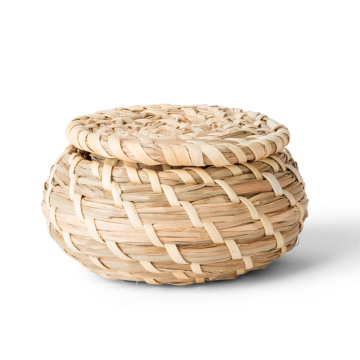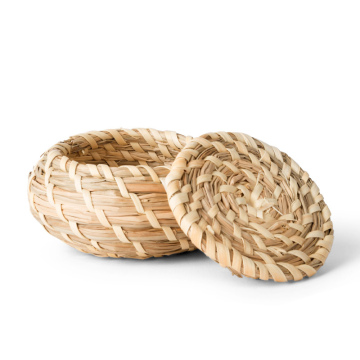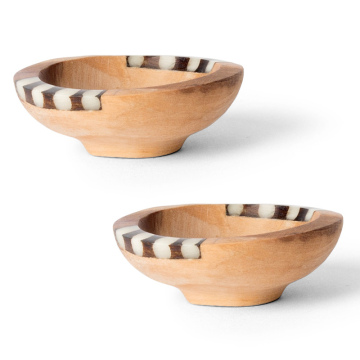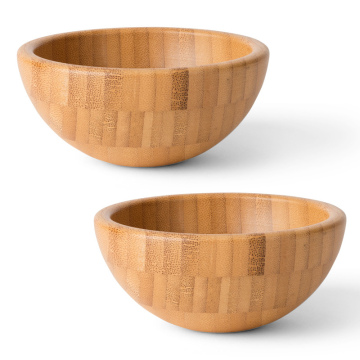From Fish to Fork: A Japanese Sushi Experience You’ll Never Forget
The Art of Sushi: A Culinary Tradition
Sushi, a dish deeply woven into the fabric of Japanese culture, is more than mere food; it is an art form that has evolved over centuries. Originating from the ancient practice of preserving fish in fermented rice, sushi has transformed into a culinary icon that reflects the meticulous craftsmanship and aesthetic principles of Japanese cuisine. The evolution of sushi can be traced back to the Edo period (1603-1868), during which it emerged as a fast food option for urban dwellers in Tokyo, known then as Edo.
Within the world of sushi, there exist several distinct styles, each characterized by unique techniques and presentations. Nigiri, a hand-formed mound of vinegared rice topped with a slice of fresh fish, epitomizes the harmony between rice and seafood. Maki, or rolled sushi, encapsulates various ingredients within a layer of rice and seaweed, offering a visually appealing and flavorful experience. Sashimi, while not technically sushi, features sliced raw fish served without rice, showcasing the freshness and quality of the ingredient itself. These various types reflect the versatility and depth of sushi as a culinary tradition.
The quality of ingredients in sushi preparation is paramount. Sushi chefs, or Itamae, undergo rigorous training to master the selection of fresh fish, traditional rice preparation, and the precise balance of flavors. Each component—from the type of fish chosen to the seasoning of rice—is treated with immense respect, signifying the commitment to quality and authenticity. Furthermore, the presentation of sushi is considered an art, where colors, shapes, and textures come together to create a visually stunning and culturally meaningful dish.
In modern times, sushi has gained global popularity, but it continues to retain its cultural significance in Japan. This culinary tradition represents a blend of history, skill, and reverence for nature, making it an unforgettable gastronomic culinary experience that invites one to appreciate not only the flavors but also the artistry involved in sushi-making.
Selecting Fresh Ingredients: The Journey Begins
The foundation of an exceptional sushi culinary experience lies in the selection of fresh and high-quality ingredients. Sushi’s success depends significantly on the fish used, and understanding the characteristics of various species is essential. Commonly used fish include tuna, salmon, mackerel, and snapper, each contributing distinct flavors and textures. Freshness in fish can be identified through various indicators: the flesh should be firm and resilient, has a bright color, and emits a clean, oceanic scent. Pay attention to the eyes; they should be clear and bright, while dull eyes indicate age and decline in quality.
Equally important in sushi crafting is the rice, or shari, which acts as a carrier for the fish. Sushi rice must be cooked to perfection—sticky yet not soggy—and seasoned with a delicate balance of rice vinegar, sugar, and salt. Selecting high-quality short-grain rice is crucial, as it absorbs flavors and maintains the right texture when paired with seafood. The proper rice-to-vinegar ratio not only enhances the overall flavor but also allows for a delightful mouthfeel when eaten with the fish.
In addition to fish and rice, the role of seaweed and vegetables cannot be overlooked. Nori—used in rolls—should be crisp and fresh, giving a subtle flavor that complements the fish. When preparing traditional sushi, high-quality vegetables such as cucumber, avocado, and pickled ingredients contribute not only to flavor but also to the visual appeal of each dish. Achieving a balance of textures and flavors creates a harmonious connection on the plate.
The journey of these ingredients extends beyond their individual qualities; it encapsulates the importance of sustainability and responsible sourcing practices. Opting for seafood that is caught or farmed sustainably ensures the health of our oceans and supports fishing communities. Consciously selecting ingredients helps achieve a sushi culinary experience that is not only delicious but also environmentally considerate.
The Sushi-Making Process: Techniques and Tools
The art of sushi-making is a refined practice that combines technique, precision, and an appreciation for the freshest ingredients. The process begins with the preparation of sushi rice, the foundation of any sushi dish. Utilize short-grain Japanese rice, known for its sticky texture which helps in forming cohesive shapes. Rinse the rice under cold water to remove excess starch, then cook it using a rice cooker or a traditional method, ensuring the right water-to-rice ratio. Once cooked, the rice should be mixed gently with a combination of rice vinegar, sugar, and salt to enhance its flavor and achieve the perfect sheen.
Next, the focus shifts to selecting and slicing fresh fish, an integral part of sushi preparation. Sushi chefs emphasize the importance of quality and freshness, often purchasing fish daily from local markets. The fish is typically filleted with a sharp knife, ensuring clean cuts to maintain the texture and flavor. Various techniques, such as 'saku' cuts for sashimi or longer slices for nigiri, are utilized to achieve the desired presentation and taste. Chefs must also understand the anatomy of fish to maximize the usage of each part, showcasing both skill and respect for the ingredient.
The rolling of sushi presents a plethora of options, with the two most popular types being nigiri and maki. For nigiri, small, hand-formed oblong shapes of rice are topped with a slice of fish, often adorned with wasabi. Maki, on the other hand, involves rolling rice and fillings inside a sheet of nori (seaweed) using a bamboo mat. This process necessitates practice to achieve the perfect roll and a balanced filling. Presentation plays a crucial role in Japanese cuisine, where the aesthetic arrangement of sushi can drastically enhance the dining culinary experience. Each piece should be crafted with care, integrating colors and patterns that delight not only the palate but also the eye.
Dining Experience: Sushi Etiquette and Culture
When partaking in a traditional sushi dining culinary experience in Japan, understanding the nuances of sushi etiquette is essential to fully appreciate this culinary art. Sushi consumption is not merely about the act of eating; it is deeply intertwined with Japanese culture, showcasing respect, tradition, and craftsmanship. One significant aspect of sushi etiquette is how to consume the sushi itself. It is customary to eat nigiri sushi with your hands rather than chopsticks, as this is believed to enhance the connection with the food and the chef's efforts. Conversely, maki sushi is typically eaten with chopsticks.
The use of condiments such as soy sauce and wasabi also has particular protocols. Diners are advised to dip the sushi fish side into the soy sauce, avoiding the rice to prevent it from soaking and falling apart. Additionally, wasabi is usually applied sparingly, as it is often already included between the fish and the rice by the sushi chef. Understanding these small details enhances the overall culinary experience and shows respect for the food prepared. Moreover, the interaction with the sushi chef, or itamae, is an integral part of the dining culinary experience. Many sushi bars feature an open counter where diners can watch the chef at work, creating a communal atmosphere that emphasizes craftsmanship and artistry. Engaging with the chef by expressing appreciation or asking questions about the ingredients can enrich the experience further.
As diners enjoy their sushi, they also partake in a collective cultural practice that transcends the individual plate of food. The ambiance of a sushi restaurant often embodies simplicity and elegance, allowing the focus to remain on the sushi itself. The attentiveness of the staff, the artistry of presentation, and the harmonious dining environment all contribute to an unforgettable sushi culinary experience, highlighting the profound connection between food and culture in Japan.
Situs Gacor Pulsa Tri 5K Tanpa Potongan Terbaru 2025
Temukan situs gacor deposit pulsa Tri 5K tanpa potongan terbaru di tahun 2025 dan nikmati beragam permainan online dengan aman. Penting untuk memilih situs yang terpercaya agar pengalaman bermain Anda menyenangkan. Dapatkan kesempatan untuk meraih berbagai bonus dan promosi menarik serta pastikan semua transaksi diproses tanpa biaya tambahan. Bergabunglah dan nikmati permainan seru yang ditawarkan oleh situs gacor pulsa di tahun ini.
Situs Deposit Pulsa Tri 5K Tanpa Potongan Paling Gacor
Temukan kemudahan transaksi dengan situs deposit pulsa Tri 5k tanpa potongan. Nikmati proses deposit yang cepat dan efisien tanpa ada potongan, serta optimalkan setiap nilai deposit Anda. Dengan langkah-langkah yang sederhana, Anda bisa melakukan transaksi dengan mudah dan merasa lebih menguntungkan. Bergabunglah sekarang dan gunakan pulsa Anda secepatnya tanpa menunggu lama!
Cara Mudah Main Situs PG Soft Via Pulsa Tri dan Indosat 5000 Tanpa Potongan
Situs PG Soft kini semakin populer di kalangan penggemar permainan online. Dengan berbagai pilihan permainan yang menarik dan bonus yang menggiurkan, semakin banyak orang yang tertarik untuk mencoba keberuntungan mereka. Salah satu cara yang praktis untuk melakukan deposit adalah melalui pulsa, khususnya dengan provider Tri dan Indosat.
Keuntungan Menggunakan Pulsa untuk Deposit
Dengan menggunakan deposit pulsa Tri dan deposit pulsa Indosat, pemain bisa melakukan deposit mulai dari nominal 5000 tanpa potongan. Ini adalah pilihan yang sangat menguntungkan, terutama bagi mereka yang tidak memiliki rekening bank atau kartu kredit. Proses deposit pun sangat cepat dan mudah, sehingga Anda bisa langsung bermain tanpa harus menunggu lama.
Langkah-Langkah Melakukan Deposit
Untuk melakukan deposit di situs PG Soft via pulsa, langkahnya sangat sederhana. Pertama, pastikan Anda memiliki pulsa yang cukup. Kemudian, akses situs PG Soft dan lakukan pendaftaran jika Anda belum memiliki akun. Pilih opsi deposit via pulsa, masukkan nomor telepon, dan jumlah deposit yang diinginkan. Ikuti instruksi yang diberikan dan tunggu konfirmasi. Setelah selesai, saldo Anda akan segera terisi dan siap digunakan untuk bermain.











